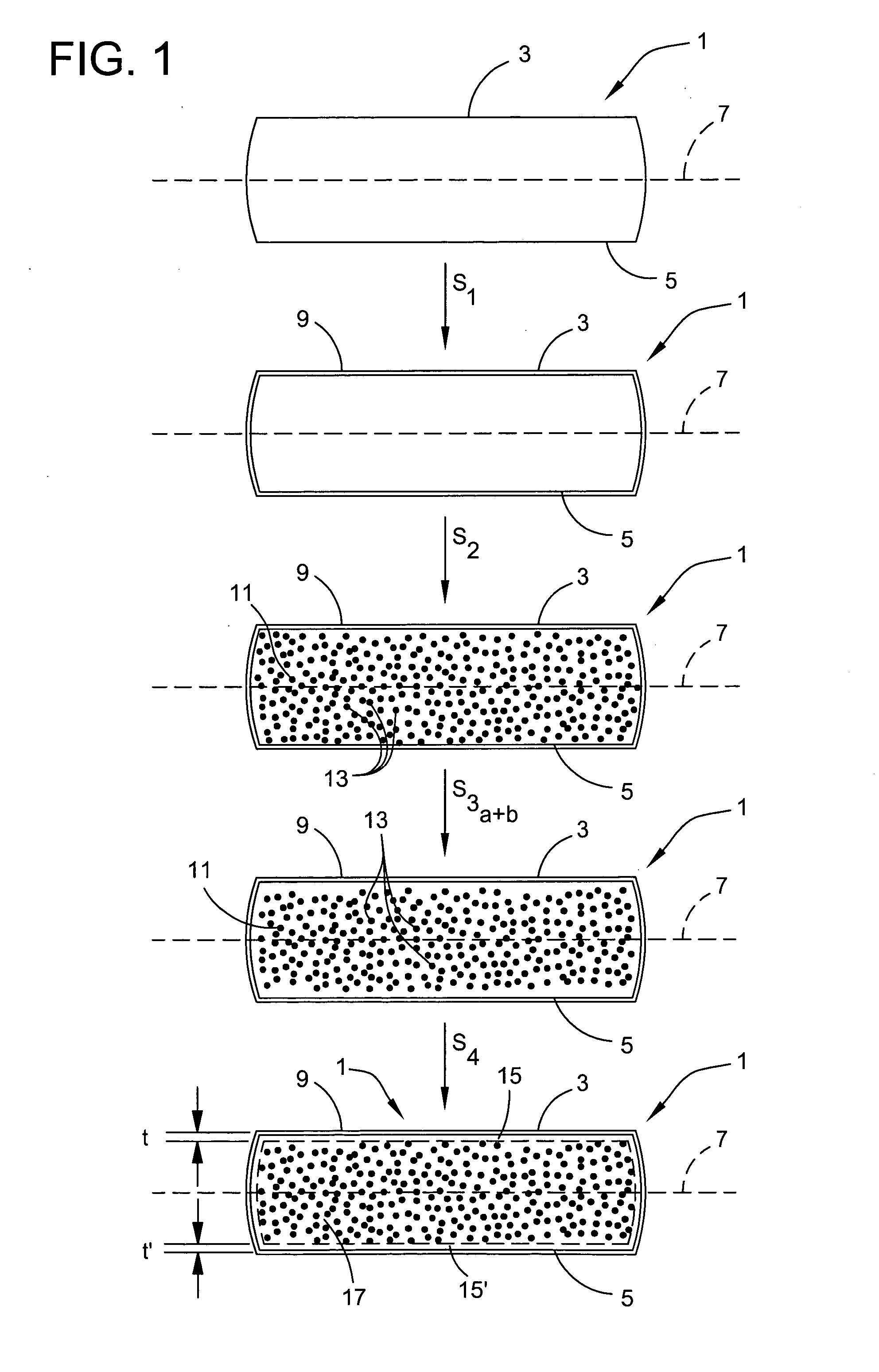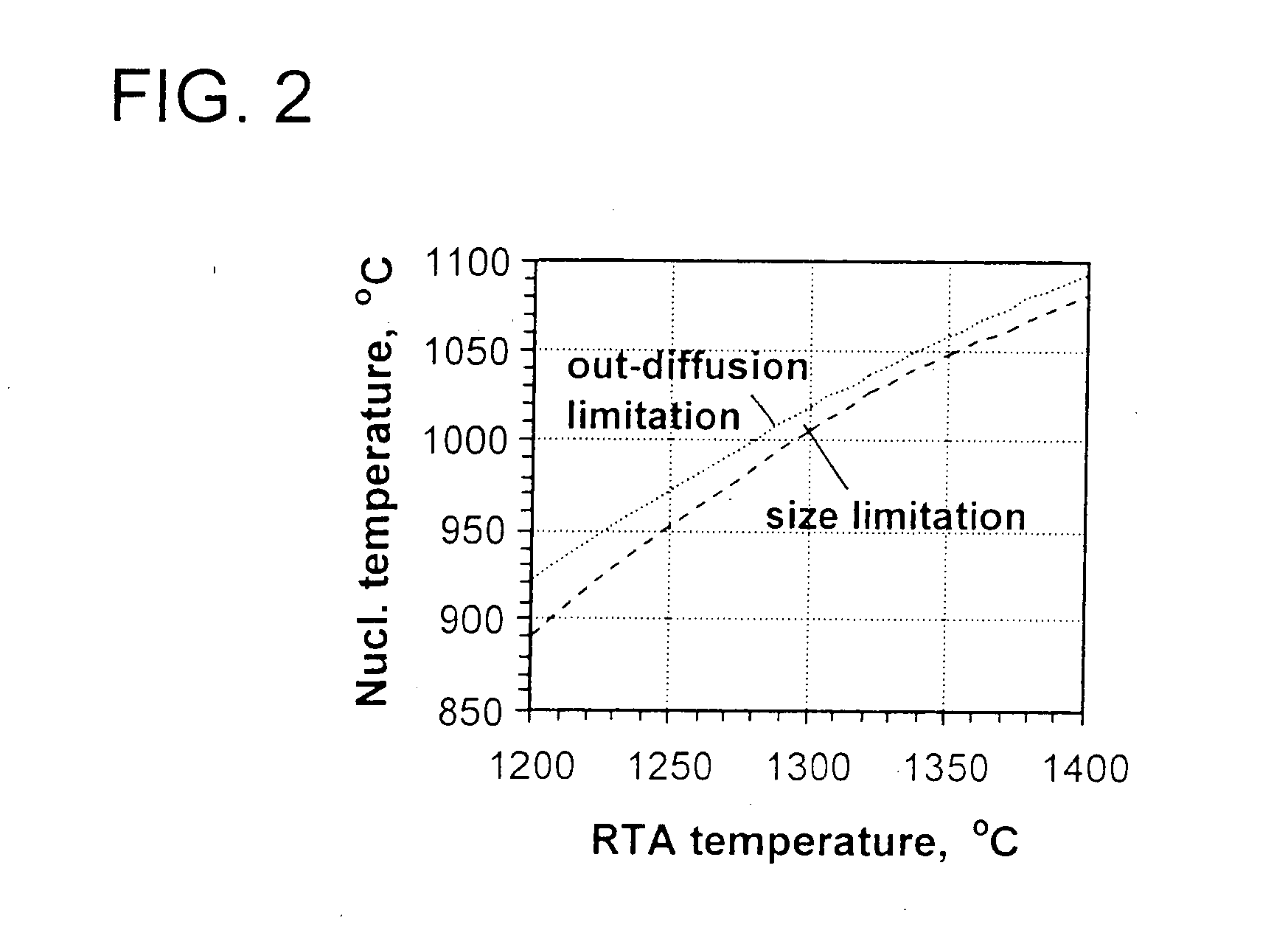Process for preparing a stabilized ideal oxygen precipitating silicon wafer
- Summary
- Abstract
- Description
- Claims
- Application Information
AI Technical Summary
Benefits of technology
Problems solved by technology
Method used
Image
Examples
Embodiment Construction
In accordance with the present invention, an ideal precipitating wafer has been discovered which, during essentially any electronic device manufacturing process, will form a denuded zone, or precipitate-free region, of sufficient depth and a wafer bulk containing a sufficient density of oxygen precipitates for intrinsic gettering purposes. Advantageously, this ideal precipitating wafer may be prepared in a matter of minutes using tools which are in common use in the semiconductor silicon manufacturing industry. This process creates a “template” in the silicon which determines or “prints” the manner in which oxygen will ultimately precipitate. In accordance with the present invention, the process for forming this template is controlled so that oxygen precipitate nucleation centers formed in the wafer bulk are stabilized such that they may survive a subsequent rapid thermal heat treatment (e.g., epitaxial deposition and / or oxygen implantation) without an intervening thermal stabiliza...
PUM
 Login to View More
Login to View More Abstract
Description
Claims
Application Information
 Login to View More
Login to View More - R&D
- Intellectual Property
- Life Sciences
- Materials
- Tech Scout
- Unparalleled Data Quality
- Higher Quality Content
- 60% Fewer Hallucinations
Browse by: Latest US Patents, China's latest patents, Technical Efficacy Thesaurus, Application Domain, Technology Topic, Popular Technical Reports.
© 2025 PatSnap. All rights reserved.Legal|Privacy policy|Modern Slavery Act Transparency Statement|Sitemap|About US| Contact US: help@patsnap.com



